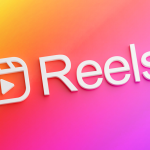Social media is important for digital coaches who want to build a strong online presence and attract the right kind of leads. This is especially true if you do webinars as part of your digital coaching. Social media, by its very nature, makes more people aware of your courses. This is because people who follow your account can comment, like, share, repost, and save your posts.
Read More: 50 Best Work From Home Jobs | Remote Jobs Work From Home
Before you start using social media, you need to know exactly what you’re selling and what will bring in new customers. You’re wasting your time if your lead magnet isn’t clear and you don’t know what you’re selling. People will look at your social media to see if you can answer their questions.
Here are some ways to improve your social media presence and make it more useful for your customers:
Contents
- 0.1 Don’t make all of your content posts about you and your course
- 0.2 Make a group on Facebook or Telegram to keep in touch with your potential customers
- 0.3 Work on a digital marketing strategy that is complete and well-rounded
- 0.4 Use a mix of long-form and short-form content based on the platform
- 0.5 Through your YouTube Live and tutorial videos, you can learn more about your audience
- 0.6 Focus on strategies that will always work
- 0.7 Google Analytics is a good way to get this kind of information.
- 0.8 Keep an eye on your competition
- 1 Conclusion
Don’t make all of your content posts about you and your course
Use your various social media channels to deliver valuable content. This will get people interested in what you have to teach.
Make a group on Facebook or Telegram to keep in touch with your potential customers
Since almost everyone already uses it, it’s a free and easy way to build a community.
Work on a digital marketing strategy that is complete and well-rounded
People will learn more about you as a digital coach through organic traffic, but you need both organic and paid traffic for it to work. Paid traffic is the fastest way to get your ideal customer to visit your site. To make money, you need to have money. Depending on how much money you have, you can use paid ads to get results quickly.
Use a mix of long-form and short-form content based on the platform
I like to spend 80% of my time on long-form content for platforms like podcasts and YouTube and 20% on short-form content for Facebook, Instagram, Twitter, and TikTok. Teens and young adults like to use Pinterest, Snapchat, and Clubhouse. LinkedIn is for people who already have jobs and want to network and find new opportunities.
The tone of your content on each platform should be different and fit the platform. Of course, the things you post on LinkedIn should be formal and professional, while the things you post on Instagram should be casual and fun. You might want all channels to have the same message, but you have to change the style and tone.
You have eight seconds to get someone to pay attention. The main goal of short-form content is to get people to look at your longer-form content. Quotes, images, carousels, and reels are all good ways to do this. Using hashtags that link back to a podcast or video will get more people interested. At this point, you can add links to your digital course and do the important pre-framing.
Through your YouTube Live and tutorial videos, you can learn more about your audience
Ask for feedback on your videos to find out what people are having trouble with and what they need. This has changed the way I talk to people so they can reach their goal much faster.
Focus on strategies that will always work
As a digital coach, it’s better to focus on strategies and principles that will always work. People still finding value in videos I made three years ago makes me very happy.
In fact, 80% of my videos on YouTube are tutorials, 15% are about strategies, and 5% are about tools that will still be useful in five years. If you consistently share useful content, people will see you as an expert in your niche. When people come to you for in-depth teaching, they don’t think of you as just a salesperson trying to sell them something.
Google Analytics is a good way to get this kind of information.
When you look at it, you’ll see what works and what needs to be changed. Keep an eye on your analytics to find out what kinds of posts get the most attention. This will help you change how you use media.
Keep an eye on your competition
Using social media is also a great way to see what your competitors are doing. This time, as a member of the audience, you’ll know about the new courses or classes. You’ll be able to tell what’s working and what’s not for your competitors, which will help you make better decisions for yourself.
Read More: The Power of a Video: Introducing Your Business in the Digital World
Conclusion
The last piece of advice is to make sure that the content you share on social media is well-researched so that the information you share is accurate and not misleading. Scams and other ways to trick people have made people on social media suspicious. As a coach, I tell you to use social media in a responsible way by posting things that make people aware of the real world. When you use social media in a positive way by teaching other people how to balance their lives, you build relationships that will last.



